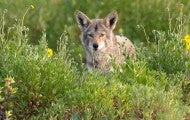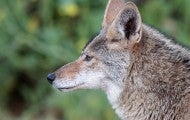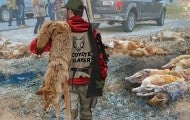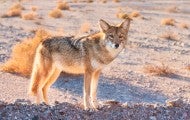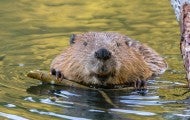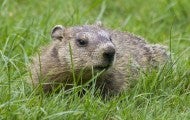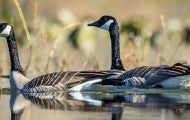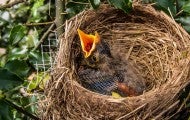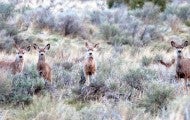If you spot a coyote in your neighborhood, relax: Most coyotes avoid people. “Seeing a coyote out during the day is not a cause for alarm, especially in the spring and summer when they’re out looking for food for their pups,” says Lynsey White, HSUS director of humane wildlife conflict resolution...
CARSON CITY, Nevada─Today, the Humane Society of the United States released the disturbing results of two January 2023 undercover investigations of wildlife killing contests in Nevada, demonstrating the need for a state law to ban them. The HSUS investigator attended the contest weigh-ins at which...
Today, the New York state legislature passed a bill that ends inhumane wildlife killing contests, in which participants compete to kill the most, the heaviest and the smallest animals for cash and prizes. In 2018 and 2020, the Humane Society of the United States released undercover investigations...
ALBANY, New York—Today Gov. Kathy Hochul signed critical legislation (A.2917/S.4099) ending wildlife killing contests for coyotes, foxes, bobcats, squirrels, raccoons, crows and other species in New York. This historic new law prohibits competitive events during which contestants compete to kill the...
Once robust, populations of cougars (also known as mountain lions or pumas) have declined drastically across most of their range in the Americas. The population decline is due to the impact of extensive hunting and predator control, in addition to continued habitat loss and fragmentation. Cougars...
Rounding up and killing entire flocks of geese has become an all-too-common (and temporary) fix in many communities. Besides being inhumane, this also leaves room for a new flock to just move right in. Geese shouldn’t be killed for doing what comes naturally, especially when long-term, effective and...
